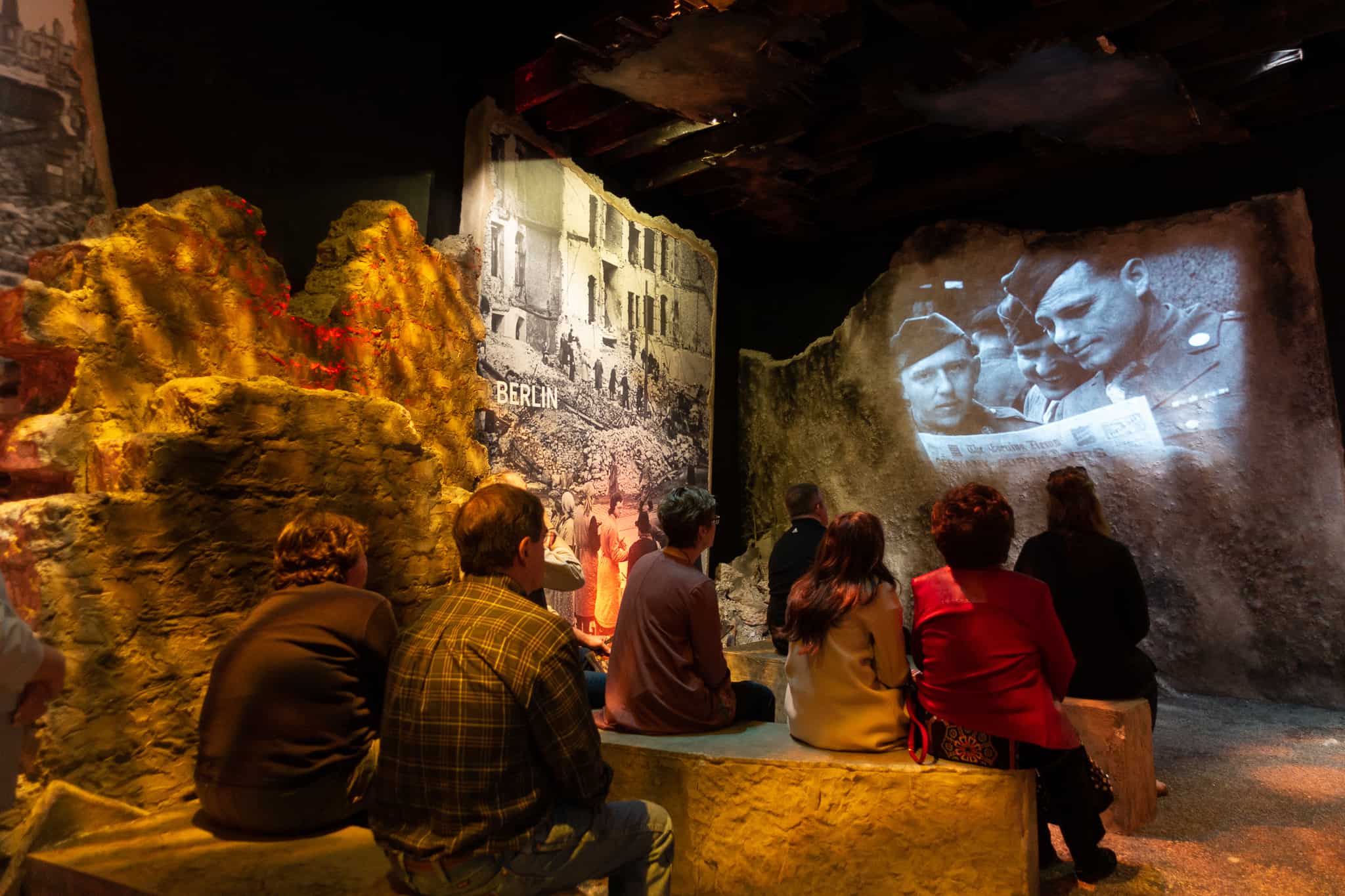Last updated on February 19th, 2025 at 10:22 am

As of early 2025, The National WWII Museum in New Orleans currently has a 4.8-star rating on Google and Viator. Google also states people generally spend 4 hours there.
You may wonder what deems it worth 4 hours of your afternoon. Well, I’m about to tell you!
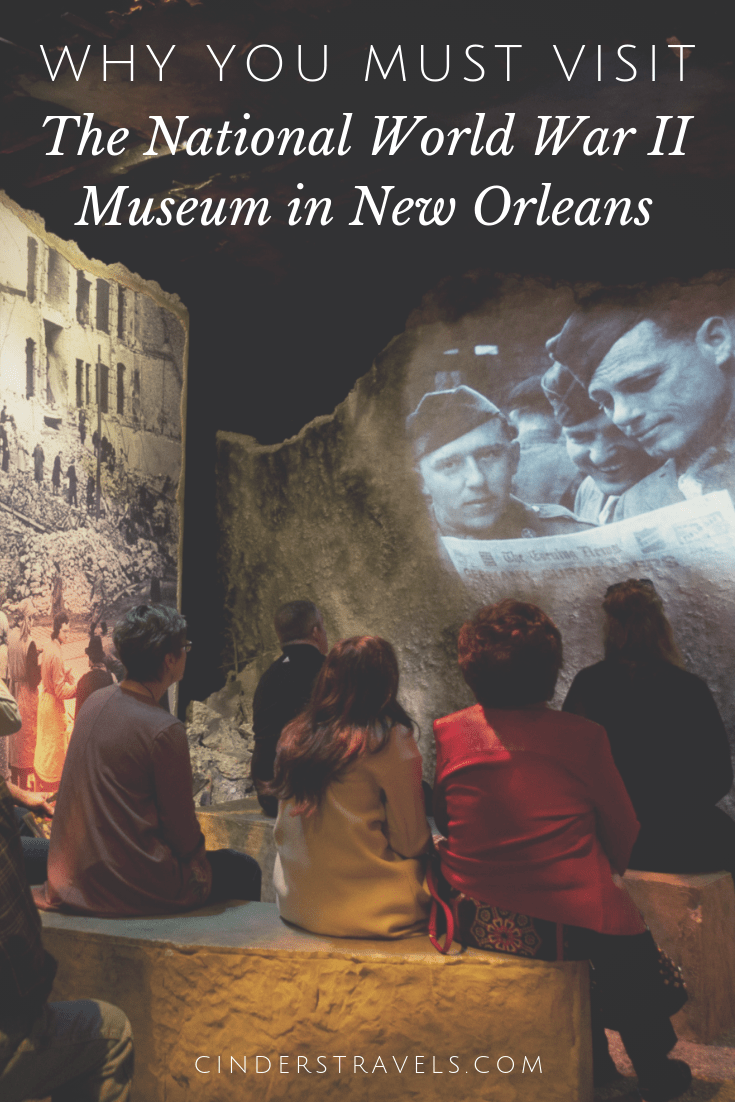
Quick Side Note on The Henry Ford & Greenfield Village
But first, real quick, let me start by saying that as a child I was spoiled with one particular museum. I grew up in the Metro Detroit area of Michigan, and we have this wonderful museum known as The Henry Ford.
For anyone who doesn’t know of this museum, first of all, go! You will love it!
What’s there to love you ask? Well,
The large indoor museum is educational and packed with various artifacts displaying the history of Innovation throughout American history, but also probably similar to what you are used to seeing in museums across the US.
But the part I always loved most and think you will too is the portion known as Greenfield Village.
Greenfield Village is not like the museums you are used to touring. It is an outdoor village that consists of buildings of historical significance that have been removed from their original locations all over America and plopped into its 90 acres of space.
The goal of the village is to show what it was like to live and work through different periods of time in America.
It has exhibits and buildings ranging from the 17th century to the present day and is remarkably interactive with staff members acting out what life was like during each period.
Henry Ford described the museum himself, saying:
“I am collecting the history of our people as written into things their hands made and used.”
It was Greenfield Village where my Grandpa taught me that if you put a coin on the railroad track, a train will come by and squish it flat. (Disclaimer: This was one of those things that were “okay” in the 90s, but you’re not supposed to do anymore.)
My dad chaperoned my
My family has listened to orchestras play during the Fourth of July firework displays there. We’ve spent Halloweens taking terrifying Sleepy Hollow-themed hayrides and trick-or-treating throughout the park. I took my brother’s engagement photos at the lake and in the doorways of some of its historical buildings.
And I most recently made sure to take my husband there so he could ride in his first-ever Model T. I even briefly entertained the idea of getting married there. This park was a huge part of my life. And no museum has been able to live up to it since.
However, this is starting to sound like a blog post about The Henry Ford, and it’s not, so I will get back to the point…
After being to many museums, including ones in Washington D.C., New York, and Los Angeles, The National WWII Museum is the closest I’ve ever felt a museum has been to existing on the same level as Greenfield Village.
Why the National WWII Museum is Amazing!
The National World War II Museum is progressive and modern.
It does as spectacular of a job as it can to help you understand what the people of this time were feeling. I firmly believe that knowledge sticks a little stronger if we can feel the emotions behind the stories. Well, this museum does just that and in some profoundly engaging ways.
The riveting exhibits transport you to the time of WWII and the places that were historically significant during the war. The beautiful imagery and displays beckon you toward each exhibit and video throughout the museum and make it so you not only hear the stories and sympathize with what you are hearing, but help you go one step further, feeling as if you can also empathize with them.
If every museum in the nation isn’t taking note of what this museum is doing, they should be (even The Henry Ford)!
The Scale of the Museum
The museum’s campus is pretty extensive. There are five buildings established in prime New Orleans Real Estate just outside of the French Quarter.
Our Path Through the Museum
In this post, I will be following the path we took throughout the buildings.
If you’re visiting from out of town and are visiting the museum to engage with as much of the content as possible, you’re going to want to make this at least a full-day trip, if not a two-day trip.
With a full day, we were able to see pretty much everything. However, a second-day pass is purchasable for an extra $12, and if we had more time in the city, we probably would have gone through with a second-day visit.
Also, I cannot speak to the Beyond All Boundaries film or The Final Mission add-on experience because we did not pay extra for these. We were going to buy tickets for one of them mid-day if we became bored, but never did!
Louisiana Memorial Pavilion
We started our day by going into the Louisiana Memorial Pavilion, purchasing our entrance tickets, and then boarding the L.W. “Pete” Kent Train Car Experience, a train similar in style to one many soldiers would head off to war in at that time.
The train does not move, but there are screens inside the train showing old videos from the time, giving you the illusion of traveling away from town. Once aboard, they give you a card with a person’s story that you can follow throughout the museum.
I thought this was a neat idea, but to be honest, we never engaged with this card again after the train ride exhibit. There was just too much to be seen elsewhere.
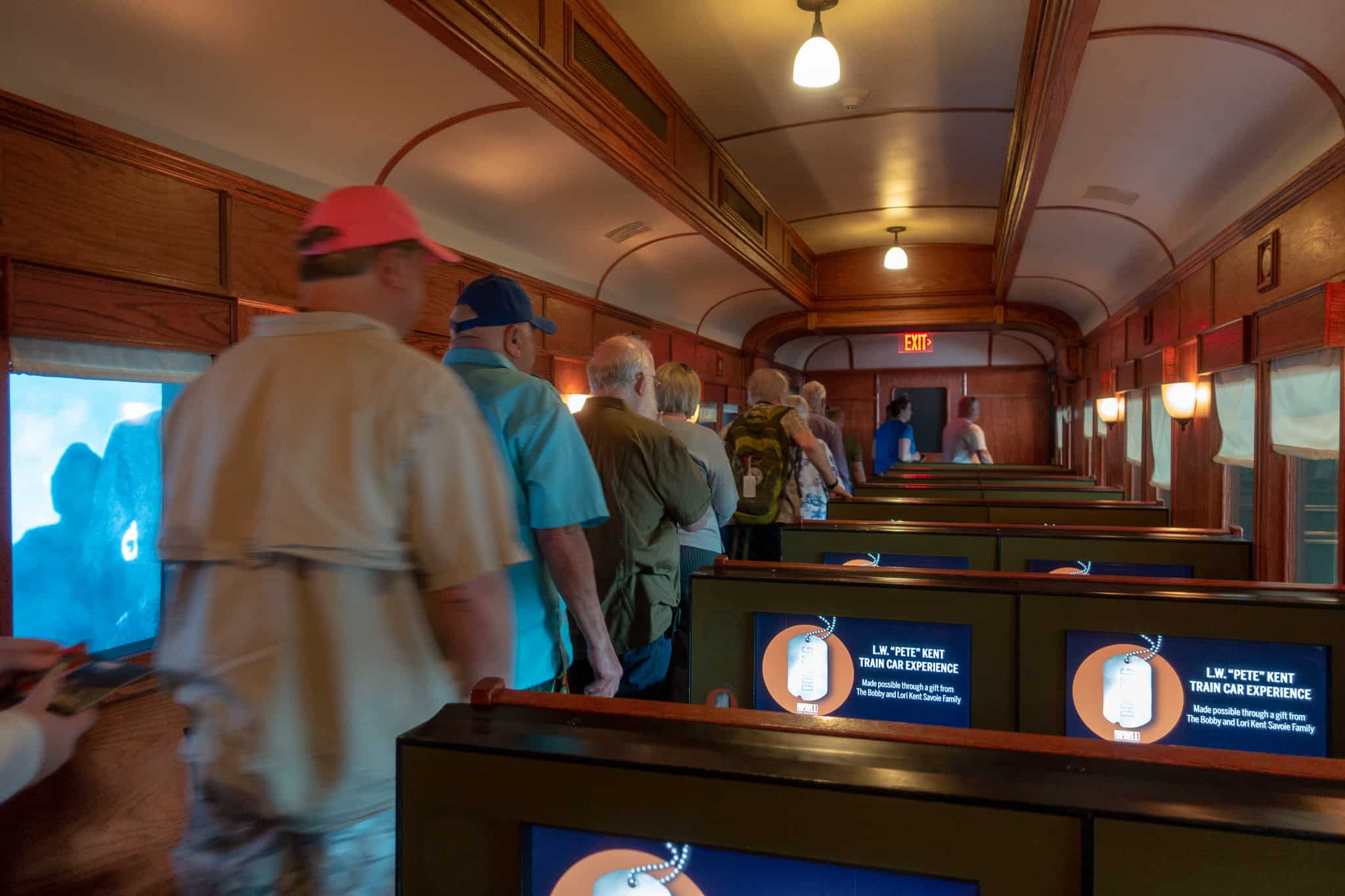
So Ready for Laughter: The Legacy of Bob Hope
[This was a temporary exhibit. It is now gone.]
We next went upstairs to the So Ready for Laughter: The Legacy of Bob Hope exhibit. I recently learned this exhibit was only temporary and has since been removed. I must say that’s a shame because this room held a lot of beautiful stories and emotions.
Bob Hope is the only person to have ever been designated an honorary veteran for his humanitarian services to the United States Armed Forces by Congress. His vaudeville act was instrumental in keeping morale high during WWII (and later in Korea and Vietnam).
He started the show in American camps and then quickly realized he needed to take the show overseas. He did his best to remind service members in both Europe and the South Pacific what they were fighting for.
The stories in this section from the people who saw his show were so heartfelt. For example, take a moment to read this letter below.
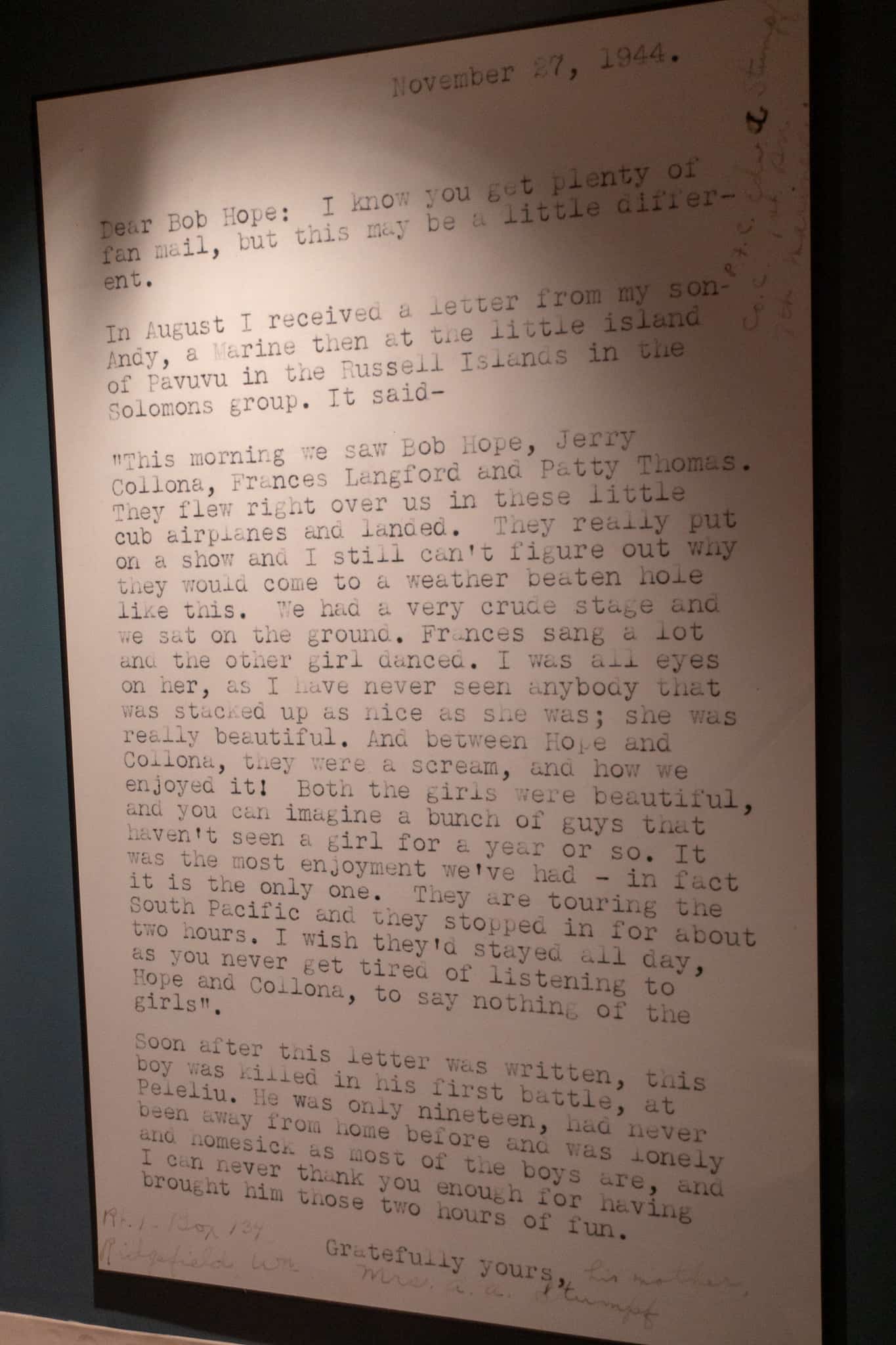
Barrett and I walked out of that room, looked at each other, and knew we were going to be in for a long day.
The Arsenal of Democracy
Next, we moved up some more stairs into The Arsenal of Democracy exhibit.
This exhibit starts by explaining the growing tensions that were happening in the world between WWI and WWII. It then continues to paint a picture of Americans’ split feelings about the impending world war and whether or not they felt America should be involved.
You then move along to a giant video screen detailing the events of Pearl Harbor and a section explaining how that was ultimately what led America to come together and choose a side concerning the war.
You continue with exhibits displaying how publishing and advertising went all in on WWII propaganda from that point on, and you get to walk through a recreation of how a typical American home looked during this time.
Racial Issues within America and the American Military
At the end of this section, there were smaller exhibits focused on the Racial Issues within America and the American Military.
One of these sections explains the Japanese Internment camps that were set up in America during the war. There are video interviews with people who were kids in the camps, and there was a particularly heartwrenching poster on the wall that was a copy of what was distributed at the time to the families. (I found it in the National Park Service Archives and am sharing it below.)
That exhibit impacted me, not only because you saw the people who lived through it describing that terrible part of American history but also because Barrett did not know about these camps.
I’m not trying to call him out. I believe there are a lot of people in America who don’t know about this part of WWII. He was blown away and spent time in this room listening and learning.
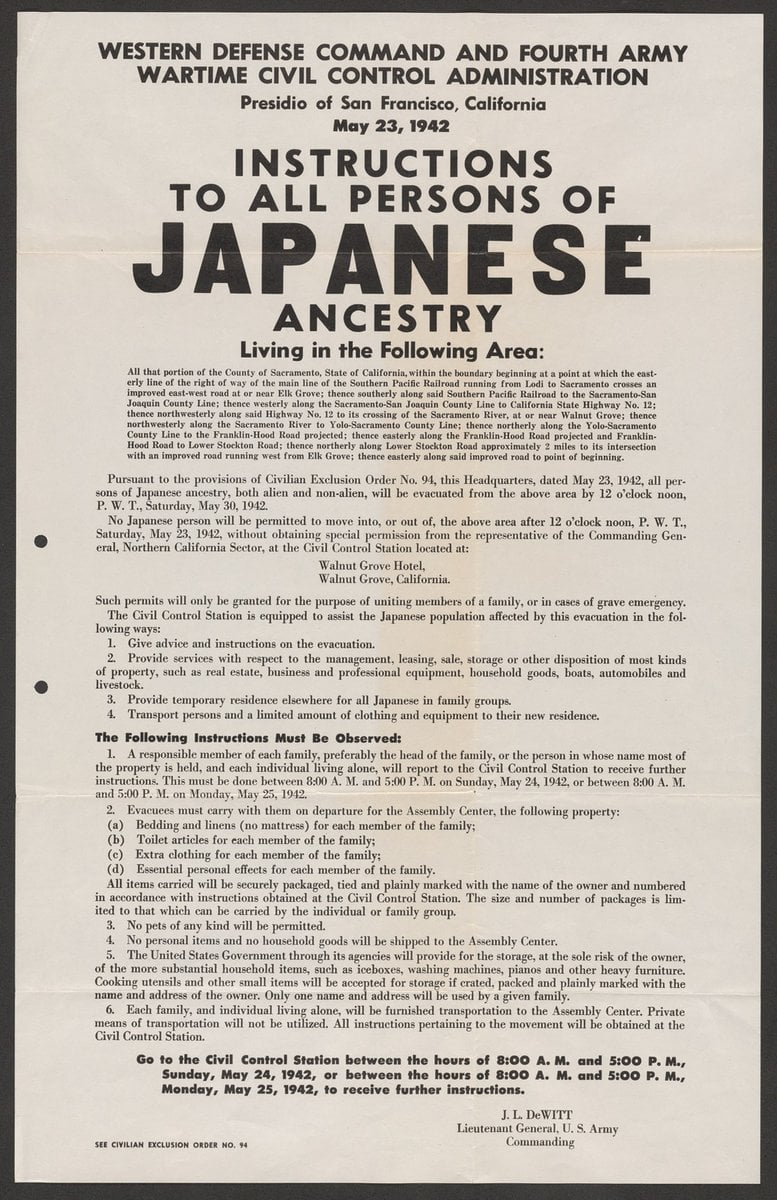
Training, Manufacturing & the Manhattan Project
There also was a section talking about the training exercises Americans had to go through to be molded into soldiers, an exhibit on all of the manufacturing that was necessary for America to keep the war effort going, and an exhibit on the Manhattan Project.
I never realized how large scale of a secret the Manhattan Project was; towns of Americans worked in different locations, and none were able to tell their families anything about where they lived or what they were doing.
The idea of that was mindblowing to me and seems like something that would be impossible in this day of age, but then again, I’m probably just not in the loop.
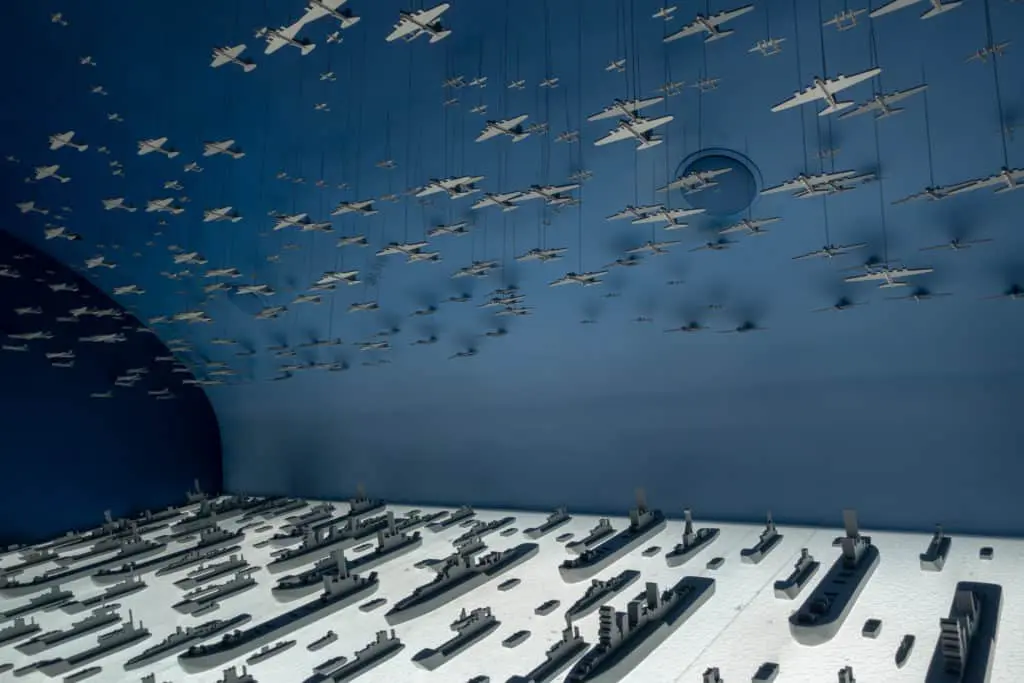
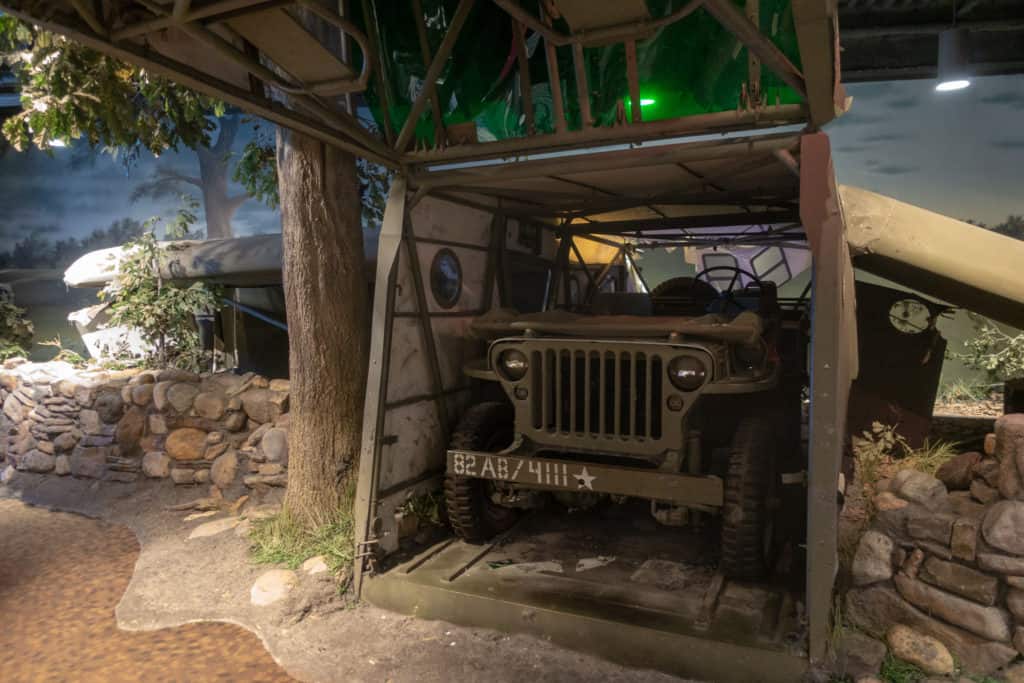
The D-Day Invasion of Normandy & the US Merchant Marine Gallery
After that section, we continued onto an exhibit named The D-Day Invasion of Normandy, which I think is relatively explanatory by its title.
And then the US Merchant Marine Gallery told the stories of the merchants who were instrumental in the large-scale transportation of material and soldiers during the war.
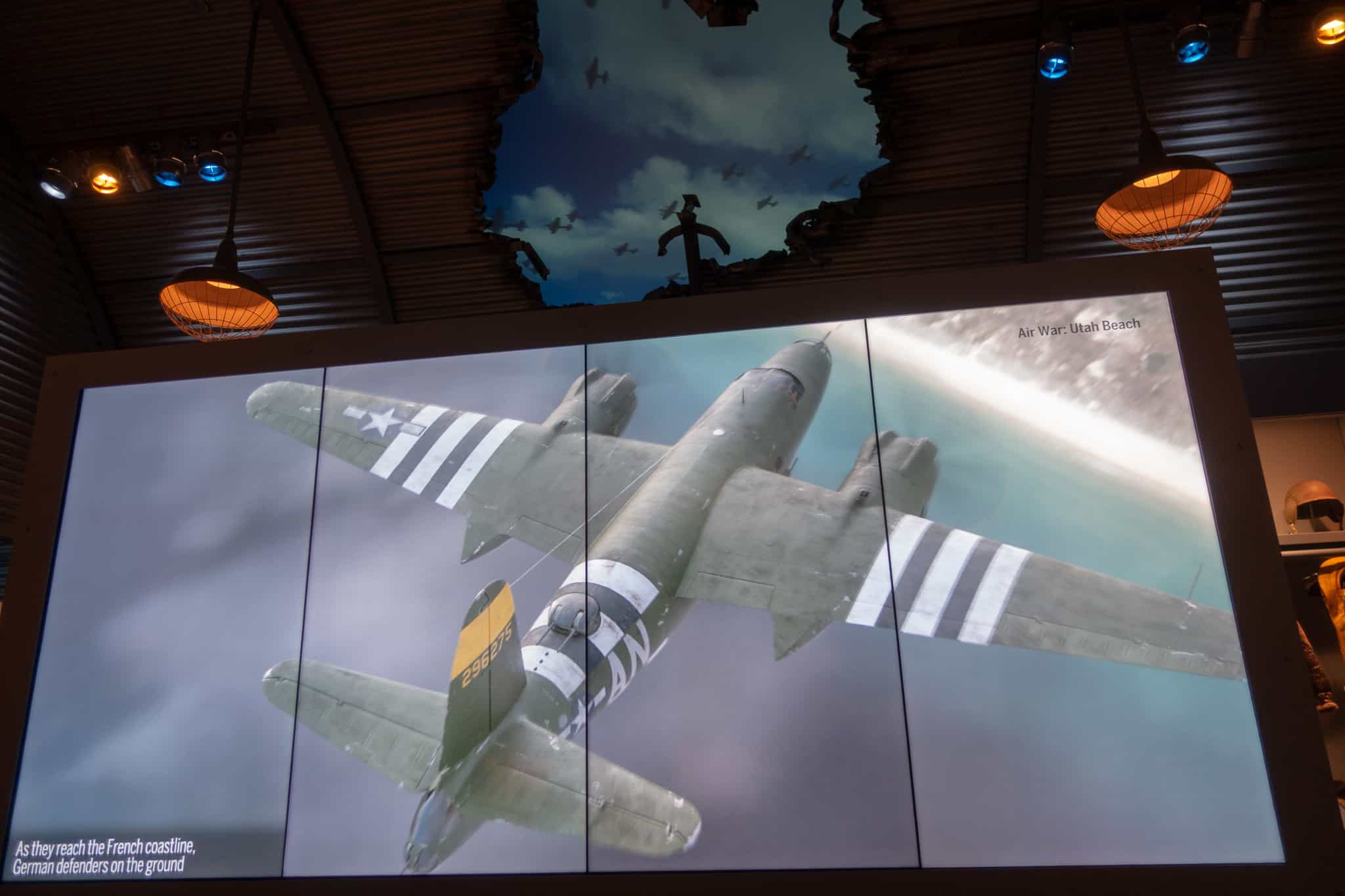
Here is an example of the incredible detail put into this museum.
This film broke down the D-Day invasion plan, with both old actual footage from the ground and new re-created footage from the sky.
While you sit and watch, the rip in the ceiling above has revealed a screen with all the different types of aircrafts whizzing by from above. The plane and bomb noises are being heard crashing all around you while you sit there.
A pretty incredible way to teach, but also makes you feel the emotion of the moment.
Jeri Nims Soda Shop
Those exhibits took many hours. After we walked through them all, we realized we still had a lot to see before the museum closed.
We decided to stop at the Jeri Nims Soda Shop to get a mid-day coffee, ice cream, and cookie.
US Freedom Pavilion: The Boeing Center
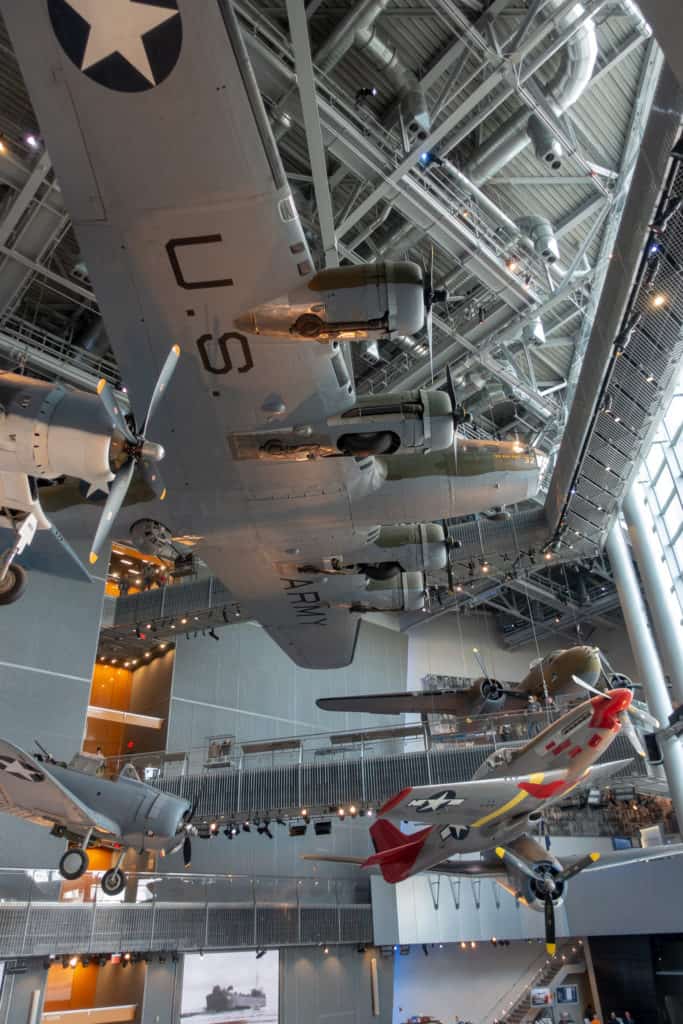
Once the caffeine and sugar kicked in, we headed over to the US Freedom Pavilion: The Boeing Center.
Barrett was most excited to see everything that was mechanical, so this was a highlight for him.
This building is pretty wild. How it’s constructed gives you the sense of being up in the clouds with the planes. It’s essentially one huge building with the illusion of four floors.
The floors are actually just steel bridges on three different levels, with different planes suspended across each level.
Once you’ve reached the top bridge, you actually may find it quite trippy. There are warnings on the way up, which I thought was silly until I got up there.
Campaigns of Courage: European and Pacific Theaters
Next, we went to the Campaigns of Courage: European and Pacific Theaters building.
This building’s exhibits were all focused on placing you in the footsteps of the servicemen who fought in the war.
If you are only going to go for part of the day, I would recommend only going to this building. The Louisiana Memorial Pavilion is full of rich history leading you up to the war. This is the building that does its best to place you into the mindset and action of WWII.
Road to Berlin
We first went into the Road to Berlin exhibit.
Its story starts in Africa and then moves through Italy, France, Belgium, Luxembourg, and Germany. While walking past each display, you pass through the different geographies and seasons that the soldiers faced during the war.
Every detail is amazing. The exhibits came to life with the incredible use of paint, plants, lights, and sound. I had never spent a lot of time wondering what it was like there for the troops while they were fighting until I walked through this museum. While here, you can’t not be thinking about it.
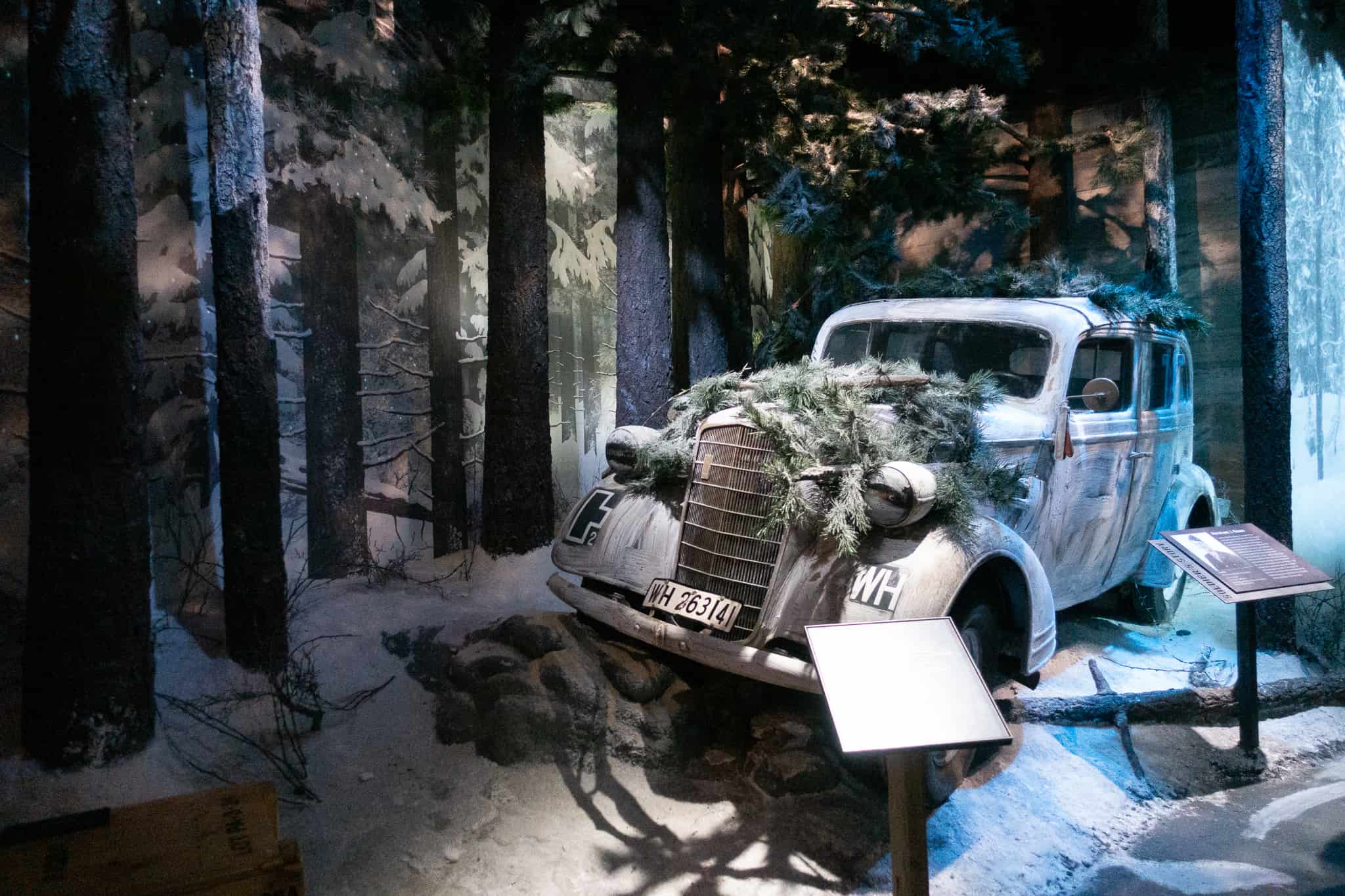
Road to Tokyo
Lastly, we went into the Road to Tokyo exhibit.
I’m sad to say we were running low on time here. We had about 15 minutes or less to cruise through and take in as much as we could, and again, the exhibits were quite the spectacle to be seen.
The path to Tokyo after Pearl Harbor was not an easy one for the American servicemen and included stops in New Guinea, Southeast Asia, the Himalayas, Burma, the islands of the Pacific, China, India, and Alaska.
I knew less about this part of WWII and knew very little about the cultural challenges, diseases, jungle, and beach elements they faced on this side of the war.
The exhibit ends with pictures, videos, and artifacts from the atomic bombs dropped on Japan.
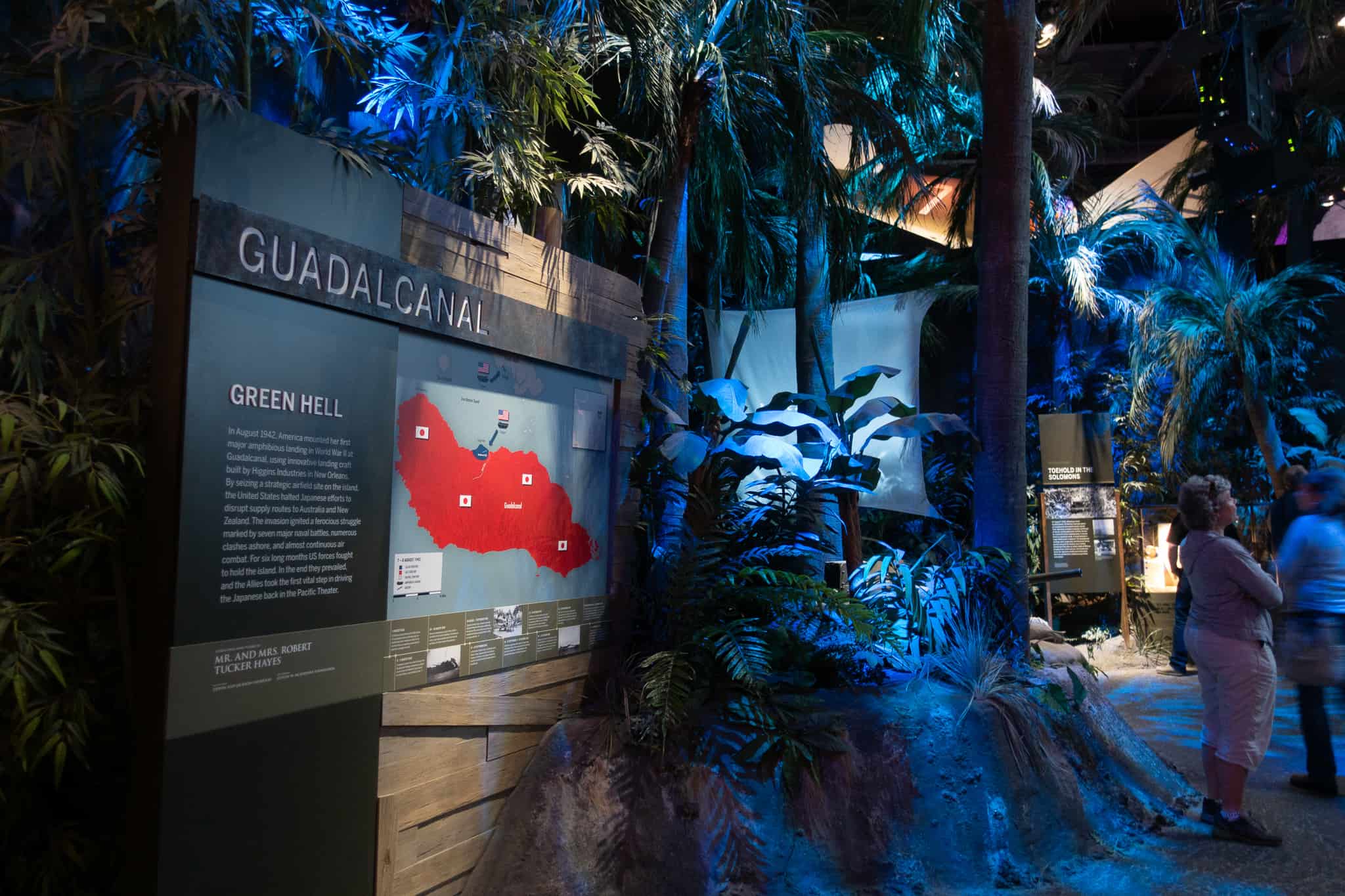
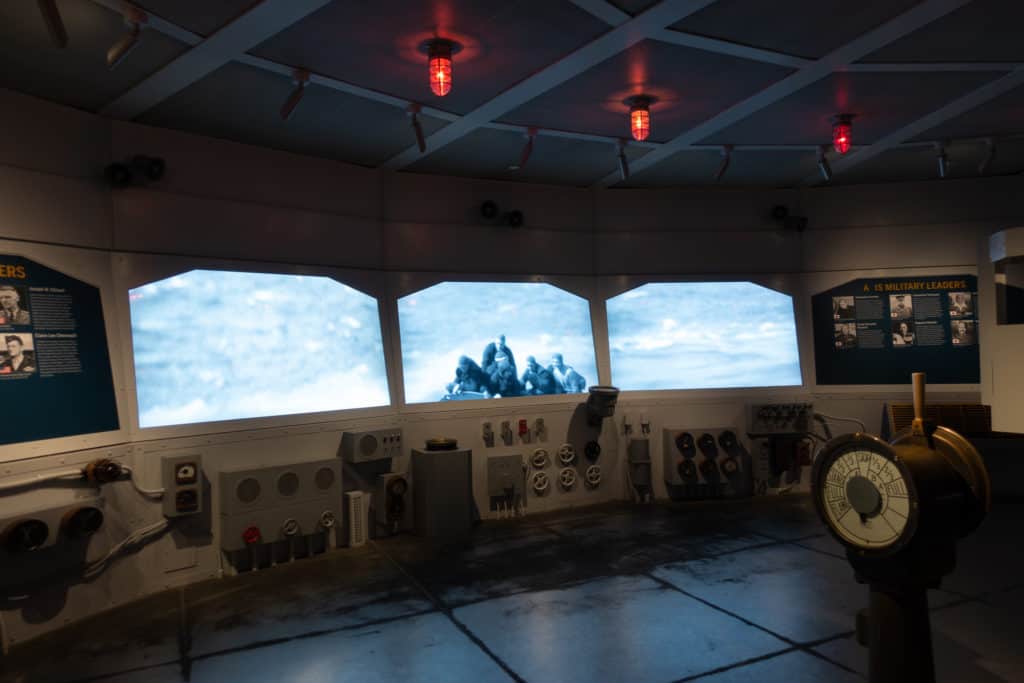
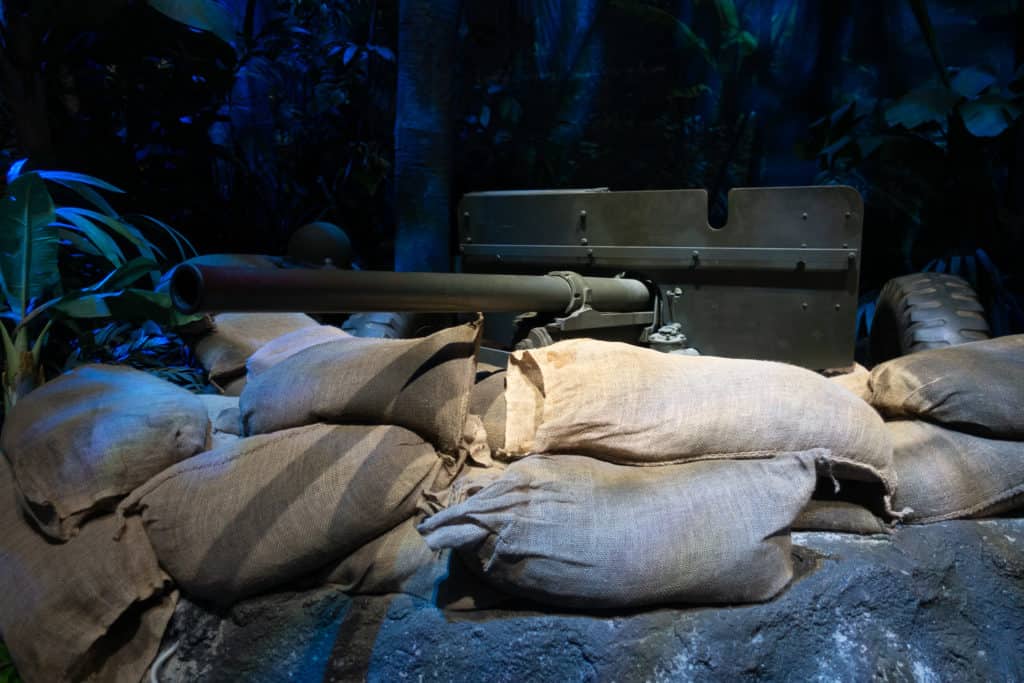
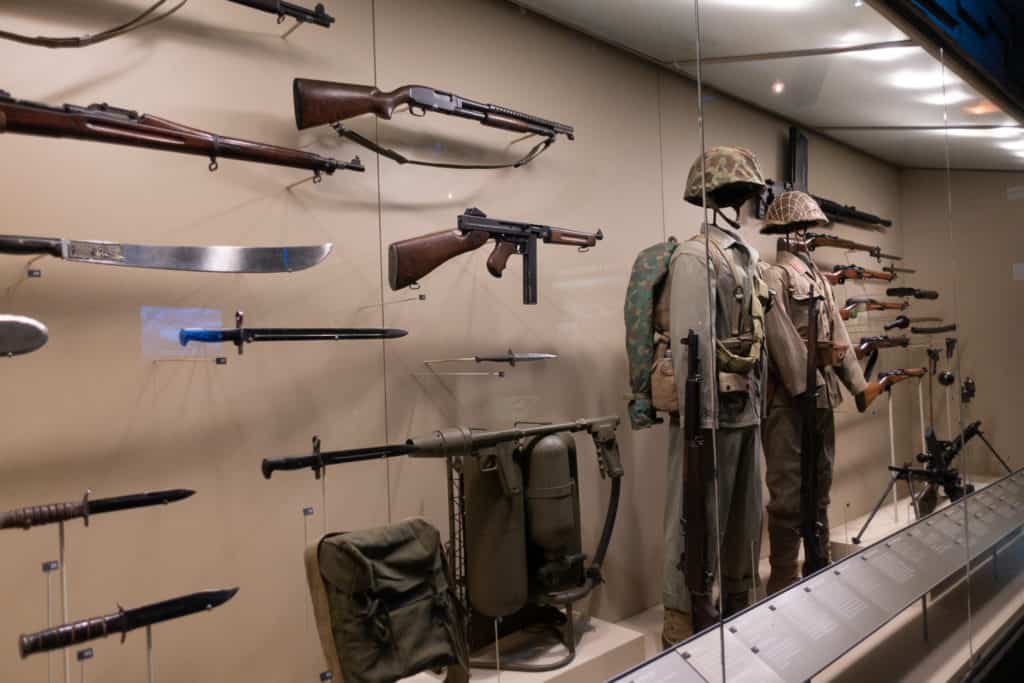
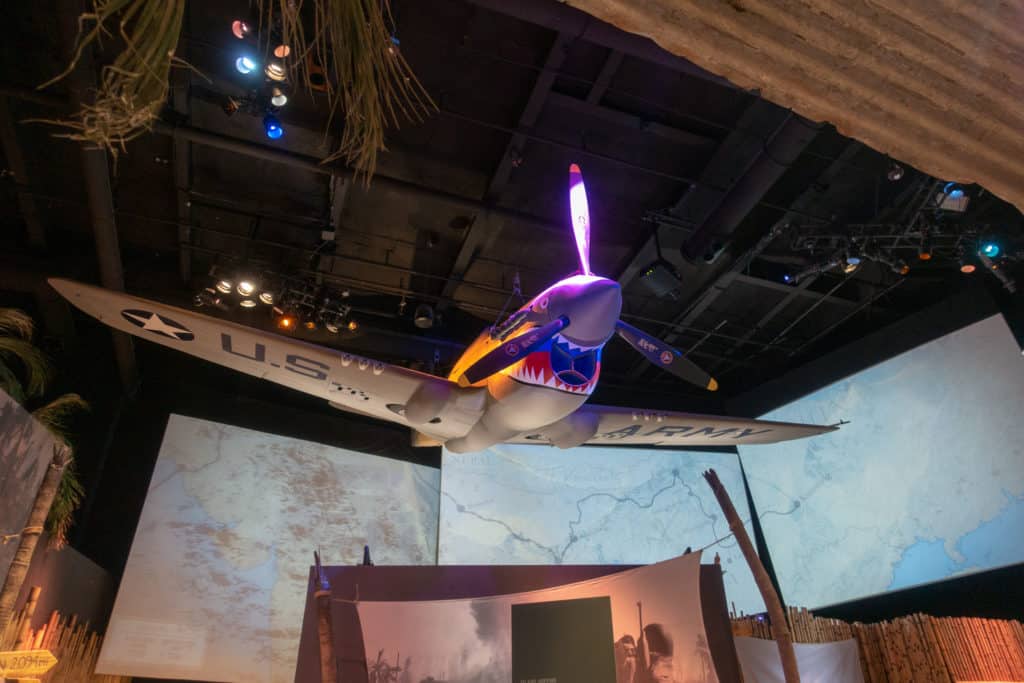
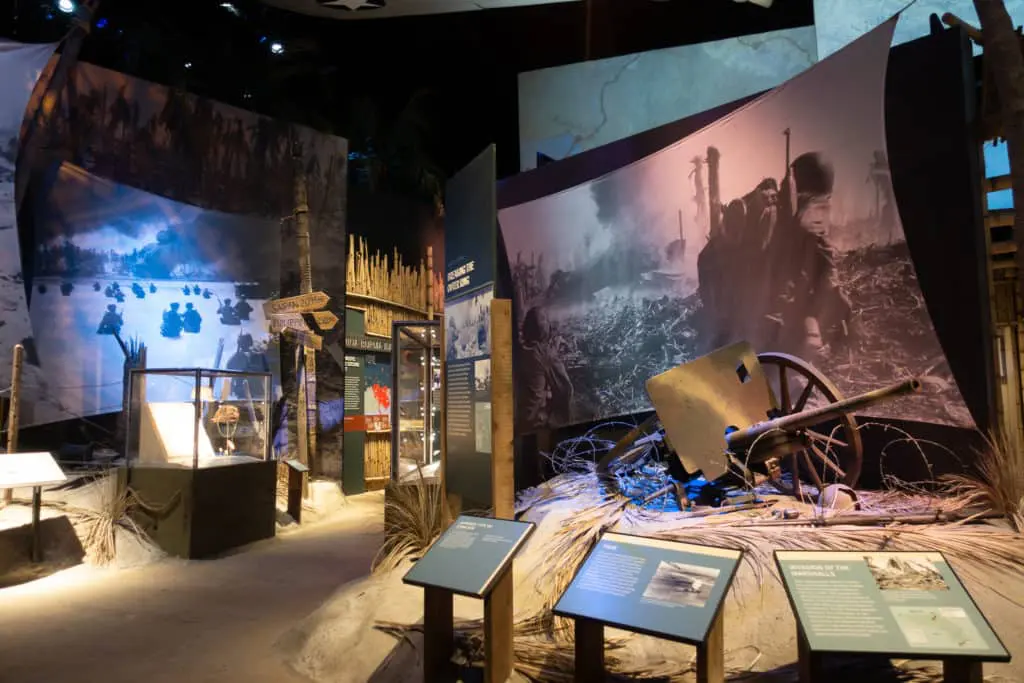
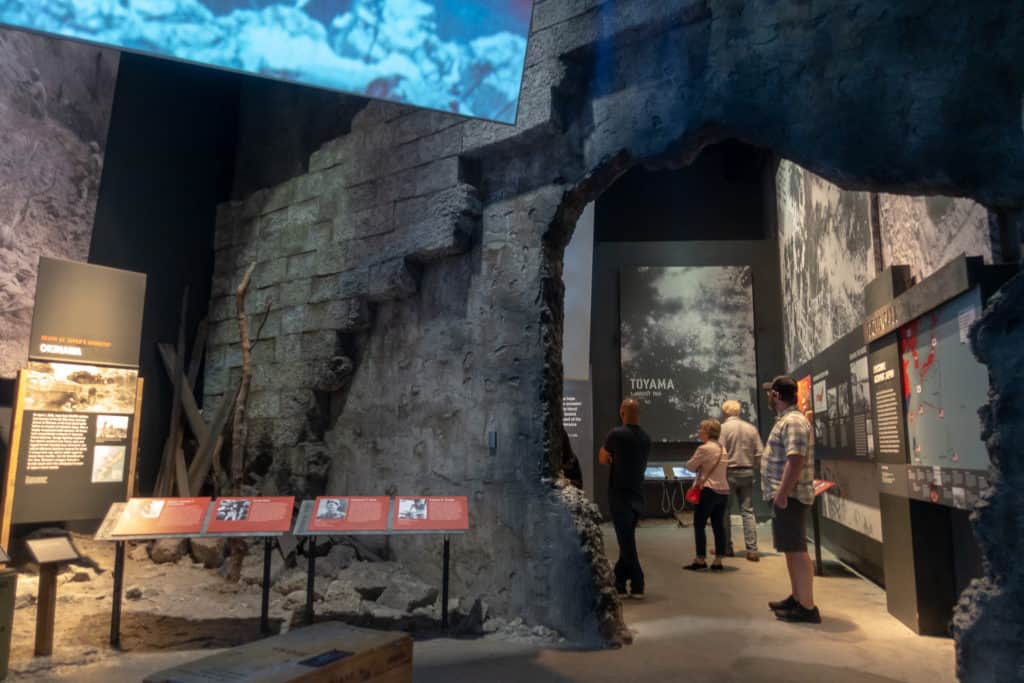
Wrap-Up: NOLA WW2 Museum
After we left, Barrett said he’d never so badly wanted to read every sign in a museum before. We both were so grateful for all we learned and felt the need for more WWII education.
We spent the next week devouring all of HBO’s Band of Brothers.
Everyone who has the chance to go to this museum should be visiting! It is flooded with opportunities to understand the history of the war.
There are videos and artifacts scattered throughout the museum for all of the visual learners out there. The videos are short, concise, and easy to digest.
There are also audio booths throughout the museum where you can take a sit break at any time and hear the telling of real-life memories from the people who lived them.
Throughout the museum, details are brought to life with incredibly entrancing lighting, audio, and scenery. There is always something new to look at right ahead, which keeps the people in the museum flowing.
At the National World War II Museum, it is easy to learn and also easy to care about what you are learning.
NOLA WW2 Museum Details
Getting there:
The museum is located at 945 Magazine Street.
Parking:
The museum’s parking garage is located at 1024 Magazine Street. You will, however, pay for the convenience of being close.
Hours:
Open daily, 9:00 a.m. – 5:00 p.m.
Closed Mardi Gras Day, Thanksgiving Day, Christmas Eve, and Christmas Day.
👉 Purchase Your Tickets to the National World War II Museum Here. 👈
Add-Ons: include Beyond All Boundaries and a Second Day Pass (recommended for those who want to read, listen, and watch everything possible in this museum).
👉 Purchase Your Tickets to the National World War II Museum Here. 👈
- Packing for a Thru-Hike: How I Chose My Gear for Trail - January 8, 2026
- A Complete Two-Day Guide to Visiting Death Valley from Las Vegas - December 16, 2025
- Hiking the Appalachian Trail: Week 9 – Grayson Highlands Ponies & Longhorns - November 30, 2025

